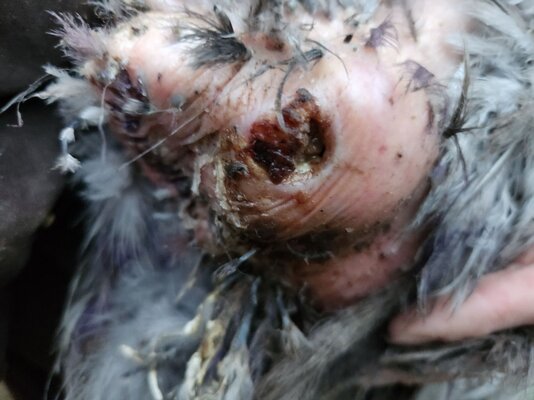- Jun 13, 2013
- 169
- 199
- 196
I have an over 8 year old hen with a lump between her tail and vent area. The lump has an open sore in it and it continually fills with pus. This has been going on since July. I have treated her with over the counter products and taken her to a veterinarian where she was given an antibiotic and medicine to flush the opening daily and nothing has worked. I have to clean out thick cheese like pus every few days. Has anyone else experienced something similar? Any treatment suggestions would be appreciated.




